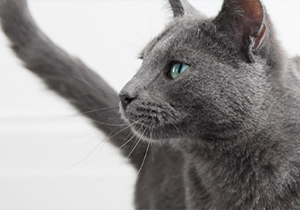Purpose Of Cats Whiskers
As cute as cats look with their fur and adorable whiskers, the latter serve several beneficial purposes and are responsible for much more than just making our furry felines look cute.
Not only are whiskers a prominent part of a cat's face, but they are highly sensitive to touch, and serve as one of the best sensory tools for cats navigating unknown or difficult terrains. As vital as whiskers are to a cat's everyday live, this article discusses how whiskers help cats navigate better, and answer questions like is cutting cat whiskers okay, and the purpose of a cat's whiskers.
What Are Whiskers?
Cat parents frequently wonder why cat whiskers are not like the rest of their fur? In fact, cat whiskers distinctly stand out in terms of their length and texture, even in cats with long coats. So, what are cat whiskers and what is the purpose of a cat's whiskers?
Cats have special hairs around their face, chin, forelegs, near the ears and upper lip, and above the eyes, which are called whiskers. Whiskers resemble hair and erupt from follicles, but they are, in fact, significantly more coarse and thicker, with roots that go thrice as deep.
Considering whiskers play a particular role in a cat's every day routine, they are extremely sensitive and equivalent to the human fingertip, adding to your feline munchkin's sense of touch. While the distribution and pattern of whiskers of cats can vary from one breed to the other, most cats have sets of 12 cat whiskers arranged in rows of 4 on each cheek.
What Do Whiskers of Cat Do?

Being highly sensitive, whiskers of cats have a crucial role to play in their adventurous lifestyle. So, mentioned below are the various advantages and purpose of a cat's whiskers:
-
Sense of Touch
In addition to adding to the elegant and adorable look of our feline furries, whiskers of cats serve as specialized sensory equipment with sensitive receptors that allow cats to easily process their surroundings, and navigate difficult terrains with ease. Whiskers help cats to determine how easily they can squeeze through narrow holes and spots without getting stuck.
-
Sense of Orientation
Although a cat's whiskers aren't the most prominent part of their feline bodies, they are incredibly essential for improving the sense of balance and orientation in cat with whiskers. The base of a cat's whisker has a proprioceptor, a special sensory organ that helps cats in coordinating their movements, and always land on their feet.
-
Communication
In addition to their adorable meows, cats are also immensely expressive through their body language, and whiskers are undoubtedly a major part of non-verbal communication in cats. A droopy, relaxed whisker usually indicates that your furry feline is content and resting, while whiskers standing on end indicate alertness and stress.
-
Whiskers work as vibration sensors
Although the whiskers of cats are known for their tactile functions, it is not all! In fact, whiskers of cats are sensitive enough to detect subtle changes in the air currents, making cats aware of the shape, size and speed of objects in the vicinity and hunt down their prey easily.
-
Whiskers are night vision aids
Cats are crepuscular and are mostly active at dawn and dusk. So, what is the purpose of a cat's whiskers in this regard? Whiskers makes it easier for cats to detect the faintest movements in their surroundings. The whiskers serve as radar sensors, allowing cats to easily locate things in their surroundings.
-
Whiskers provide protection
A cat's whisker is incredibly sensitive and can easily react to the smallest change in their environment. In addition to efficiently avoiding predators, whiskers allow cats to protect their eyes against dust particles, avoid obstacles when they are out on an adventure, and aids in detecting dangers in their surroundings.
How Many Whiskers Do Cats Have?
Although it is natural for all cats to have whiskers, the pattern and the exact number of whiskers of cats usually vary from one breed to the other. Furthermore, whiskers in cats grow in very specific spots, and are usually evenly spaced. Cats usually have sets of 12 whiskers along 4 rows on each cheek with shorter ones in the front and the longer at the back, 3 over each eye, and a few shorter whiskers on their chin.
Additionally, cats can also have longer whiskers around the ears, as well as on the back of their forelegs. It is also surprising to know that cats always have whiskers in even numbers, and are symmetrically distributed over their adorable faces, so that cat with whiskers can accurately navigate their environment.
What Happens If You Cut Cat Whiskers?
Cats are extremely intelligent and can adapt to most situations. And considering cats process their immediate environment through their tactile sense, they often rely on their whiskers to better understand and navigate their surroundings. In fact, much of feline brain's sensory response are reactions to the data cats receive from the whiskers of cats.
So, cutting a cat's whiskers is not a good idea. Additionally, the follicle of the cat whisker is attached to nerve endings, and although cutting the whisker does not cause any pain, it can adversely affect the everyday lifestyle of your kitty, causing confusion and stress.
Conclusion
Cat with whiskers are extremely curious and adventurous by their very nature, so it is no surprise that they rely on their whiskers as sensory inputs to navigate their surroundings. If a cat breaks its whiskers, or is trimmed away for medical reasons, the whisker will grow back over time. Although it might cause your kitty to feel anxious and confused for a while since they can no longer being able to rely on their whiskers for the various purposes.
Cat with whiskers are no strangers to shading their loose fur and can also naturally shed their whiskers, but not more than 2 to 3 at a time. Most cats are able to regrow their whiskers to appropriate length within 6 weeks to 3 months. Although the function of their whiskers remains unchanged, the colour of the cat's whiskers can change after it has been shed and new ones regrow.
FAQs
-
What if you cut off a cat's whisker?
Although cat's whiskers are connected to nerve endings, cutting off a cat's whisker does not cause pain to your feline. However, if you cut off cat whiskers, it grows back to its adequate lengths by 6 weeks to 3 months.
-
What do cat whiskers do?
Cat whiskers serve as helping aids when it comes to navigating the surroundings. A cat’s whiskers allow them to process and better understand their surroundings, hunt more efficiently, and even use the whiskers to detect changes in the air currents.
-
Is it okay to touch a cat's whiskers?
It is okay to touch a cat whiskers lovingly. Cat with whiskers is extremely loving and they appreciate affection. However, it is important to note that cat's whiskers are not to be pulled, as it can cause cats significant discomfort.
-
Do cat whiskers grow back if cut?
Yes, cutting cat whiskers is harmless, and usually grows back within 6 weeks to 3 months. However, considering cat whiskers are important sensory organs, it is not advised to cut them as it may cause your furry to feel disoriented.
-
Does plucking cat whiskers hurt?
Although cats have sensory receptors at the base of their whiskers that connect to the brain, cutting cat whiskers does not cause any discomfort. However, pulling at the whiskers or plucking them by force can cause pain in cat with whiskers.










